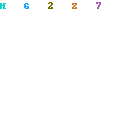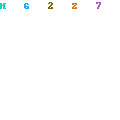copied from myanmaritmen
http://www.myanmaritmen.com/home/46-cracking/327-windows-7-password-recovery.html?sms_ss=favorites
Windows 7 မွာ ကိုယ့္ User Account ရဲ႕ Password ေမ့သြားရင္ Password ကို ဖ်က္ပစ္တဲ့ နည္းပါ။ သူမ်ားစက္ရဲ႕ Password ေတြ ဖ်က္ဖို႔ တင္ေပးလိုက္တာ မဟုတ္ပါဘူး။ အေရးႀကံဳရင္ ထုတ္သံုးဖို႔ပါ။ ကၽြန္ေတာ္ဆို ဟိုတစ္ေန႔က အသိတစ္ေယာက္က ေတာင္းဆိုလို႔ Google မွာ ရွာရင္းနဲ႔ ေတြ႕ရွိခဲ့တာပါ။ အသံုးျပဳတဲ့ Software ကေတာ့ Offline NT Password&Registry Editor ပါ။ Hiren 10 ေခြထဲမွာလည္း ပါၿပီးသားပါ။ အခုေတာ့ အဲဒီ Offline NT ကို Memory Stick ထဲကို ထည့္သြင္းၿပီး အသံုးျပဳနည္းကို ေဖာ္ျပသြားမွာပါ။
Memory Stick အတြင္းသို႔ Offline NT ကို ထည့္သြင္းျခင္း
ပထမဆံုး Offline NT Password & Registry Editor ကို http://pogostick.net/~pnh/ntpasswd/cd100627.zip ကေန Download ဆြဲပါ။ ရလာမွာက Zip ဖိုင္ပါ။ အဲဒါကို Extract လုပ္ပါ။ ISO ဖိုင္တစ္ဖိုင္ ထြက္လာပါလိမ့္မယ္။ အဲဒီ ISO ဖိုင္ကို Extract လုပ္ပါ။ CD နဲ႔ သံုးခ်င္သူမ်ားအဖို႔ေတာ့ အဲဒီ ISO ဖိုင္ကို Extract လုပ္စရာမလိုပါ။ အဲဒီဖိုင္ကို Burn လိုက္ရင္ သံုးလို႔ရပါၿပီ။
Memory Stick ကို Format ခ်ပါ။ ၿပီးရင္ Command Prompt ကိုဖြင့္ပါ။ ေအာက္ပါ Command ေတြ ေပးပါ။ ဒီ Command ေတြဟာ Memory Stick ထဲကို Bootloader ထည့္သြင္းျခင္း ျဖစ္ပါတယ္။ ဒါမွ Stick ကေန Boot လုပ္လို႔ ရမွာပါ။
1. diskpart
2. list disk
3. select disk x (x ေနရာမွာ Memory Stick ရဲ႕ Disk number ကို အစားသြင္းရပါမယ္)
4. clean
5. create partition primary
6. select partition 1
7. active
8. format fs=fat32
9. assign
10. exit
ၿပီးရင္ အေစာက ISO ဖိုင္ကို Extract လုပ္တုန္းက ရလာတဲ့ ဖိုင္ေတြအားလံုးကို Stick ထဲသို႔ Copy ကူးထည့္ပါ။ ၿပီးရင္ Command Prompt ကို ဖြင့္ၿပီး ဒီ Command ေပးပါ။
X:\syslinux.ex –ma X: (X: ေနရာမွာ Stick ရဲ႕ Drive Letter ကို အစားသြင္းရပါမယ္)
ဒါဆိုရင္ Stick ထဲကို Offline NT Password & Registry Editor ထည့္လို႔ ၿပီးသြားပါၿပီ။
အသံုးျပဳနည္း
Stick ကေန Boot တက္ပါ။ အဲဒီအခါမွာ Offline NT တက္လာပါလိမ့္မယ္။ Screen မွာ အခုလို ျမင္ေတြ႕ပါလိမ့္မယ္။
ISOLINUX 3.51 2007-06-10 Copyright (C) 1994-2007 H. Peter Anvin
***************************************************************************
* *
* Windows NT/2k/XP/Vista Change Password / Registry Editor / Boot CD *
* *
* (c) 1998-2007 Petter Nordahl-Hagen. Distributed under GNU GPL v2 *
* *
* DISCLAIMER: THIS SOFTWARE COMES WITH ABSOLUTELY NO WARRANTIES! *
* THE AUTHOR CAN NOT BE HELD RESPONSIBLE FOR ANY DAMAGE *
* CAUSED BY THE (MIS)USE OF THIS SOFTWARE *
* *
* More info at: http://pogostick.net/~pnh/ntpasswd/ *
* Email :
pnh@pogostick.net This e-mail address is being protected from spambots. You need JavaScript enabled to view it *
* *
* CD build date: Sun Sep 23 14:15:35 CEST 2007 *
***************************************************************************
Press enter to boot, or give linux kernel boot options first if needed.
Some that I have to use once in a while:
boot nousb - to turn off USB if not used and it causes problems
boot irqpoll - if some drivers hang with irq problem messages
boot nodrivers - skip automatic disk driver loading
Enter တစ္ခ်က္သာ ေခါက္လိုက္ပါ။ ေနာက္ထပ္ Driver ေတြ ဆြဲေခၚတဲ့ စာေတြ ေပၚလာပါလိမ့္မယ္။ အဆံုးမွာေတာ့ ေအာက္မွာျပထားသလို ေပၚပါလိမ့္မယ္။
Disks:
Disk /dev/sda: 42.9 GB, 42949672960 bytes
Candidate Windows partitions found:
1 : /dev/sda1 40958MB BOOT
Please select partition by number or
q = quit
d = automatically start disk drivers
m = manually select disk drivers to load
f = fetch additional drivers from floppy / usb
a = show all partitions found
l = show propbable Windows (NTFS) partitions only
Select:
အဲဒီမွာ Windows ရွိေနတဲ့ Partition ကို ေရြးေပးရပါမယ္။ အမ်ားအားျဖင့္ေတာ့ 1 လို႔ ရိုက္ၿပီး Enter ေခါက္ရတာပါ။ အဲဒီအခါ ေနာက္ထပ္ စာေတြေပၚလာၿပီး ေအာက္မွာျပထားသလို ထပ္ေရြးခိုင္းပါလိမ့္ဦးမယ္။
Select which part of registry to load, use predefined choices
or list the files with space as delimiter
1 - Password reset [sam system security]
2 - RecoveryConsole parameters [software]
q - quit - return to previous
[1] :
1 လို႔ ရိုက္ၿပီး Enter ေခါက္ပါ။ ေနာက္ထပ္ စာေတြေပၚလာပါလိမ့္ဦးမယ္။ ေအာက္မွာ ျပထားသလို ထပ္ေရြးခိုင္းပါလိမ့္ဦးမယ္။
======== chntpw Main Interactive Menu ========
Loaded hives:
1 - Edit user data and passwords
2 - Syskey status & change
3 - RecoveryConsole settings
- - -
9 - Registry editor, now with full write support!
q - Quit (you will be asked if there is something to save)
What to do? [1] ->
1 လို႔ ရိုက္ၿပီး Enter ထပ္ေခါက္ပါ။ အဲဒီအခါ Windows 7 ထဲမွာရွိတဲ့ User Account ေတြကို ေအာက္မွာ နမူနာ ျပထားသလို ေပၚလာပါလိမ့္မယ္။
===== chntpw Edit User Info & Passwords ====
| RID -|---------- Username ------------| Admin? |- Lock? --|
| 03e8 | admin | ADMIN | |
| 01f4 | Administrator | ADMIN | dis/lock |
| 03ec | grumf1 | | |
| 03ed | grumf2 | | |
| 03ee | grumf3 | | |
| 01f5 | Guest | | dis/lock |
| 03ea | jalla1 | ADMIN | *BLANK* |
| 03eb | jalla2 | | *BLANK* |
| 03e9 | petro | ADMIN | *BLANK* |
ကိုယ္ Password ဖ်က္မယ့္ user account နာမည္ကို ရိုက္ထည့္ၿပီး Enter ေခါက္ပါ။ ဥပမာ Administrator လို႔ ရိုက္ၿပီး Enter ေခါက္ၾကည့္ပါ။ ေနာက္ထပ္ အခုလို Menu ထပ္ေပၚလာပါလိမ့္ဦးမယ္။
- - - - User Edit Menu:
1 - Clear (blank) user password
2 - Edit (set new) user password (careful with this on XP or Vista)
3 - Promote user (make user an administrator)
(4 - Unlock and enable user account) [seems unlocked already]
q - Quit editing user, back to user select
Password ကို Clear လုပ္မွာမို႔ 1 လို႔ ရိုက္ၿပီး Enter ေခါက္ပါ။ Password Clear ျဖစ္သြားပါၿပီ။ ရပါၿပီ။ သိမ္းၿပီး ထြက္ဖို႔အတြက္ Shift+1 ကို ႏွိပ္ပါ။ ေနာက္ထပ္ Menu တစ္ခု ထပ္ေပၚလာရင္ ထြက္မွာမို႔ q လို႔ ရိုက္ၿပီး Enter ေခါက္ပါ။
=========================================================
¤ Step FOUR: Writing back changes
=========================================================
About to write file(s) back! Do it? [n] :
အေပၚက ျပထားသလို ထပ္ေပၚလာရင္ y လို႔ ႕ရိုက္လိုက္ပါ။
ၿပီးသြားပါၿပီ။ အဲဒီ Account ရဲ႕ Password ပ်က္သြားပါၿပီ။
နိဂံုး
ဓားတစ္ေခ်ာင္းလိုပါပဲ။ အဲဒီဓားက ဆရာ၀န္လက္ထဲ ေရာက္သြားရင္ လူ႔အသက္ကယ္ဖို႔ ျဖစ္သြားႏိုင္ပါတယ္။ ဒါမွမဟုတ္ အဲဒီဓားက လူမိုက္တစ္ေယာက္ လက္ထဲေရာက္သြားရင္ လူသတ္ဖို႔ ျဖစ္ခ်င္ျဖစ္သြားႏိုင္ပါတယ္။
ကၽြန္ေတာ္ ခင္ဗ်ားတို႔ကို ဓားတစ္ေခ်ာင္း ေပးလိုက္တာပါ။









